Sustainable Improvement of Zeolitic Pyroclastic Soils for the Preservation of Historical Sites
Abstract
1. Introduction
2. Material and Methods
3. Results and Discussion
3.1. Physical Properties of Raw Samples
3.2. Chemo-physical Characterization of Lime-Treated Samples
3.3. Lime Treatment Effects on the Soil Compressibility
4. Conclusions
- portlandite, chabazite and amorphous phases are the main phases involved in pozzolanic reactions induced by lime addition;
- by comparing diffractometer and thermogravimetric analyses, it is evident that secondary hydrated phases, mainly C-A-H and C-S-H, are formed since the very short time;
- the observed compressibility upon loading in oedometer conditions is relevantly affected by the formation of hydrated secondary phases; the reduction of compressibility and the increase of yield stress are directly linked to the amount of newly formed hydrated phases, in turn depending on the amount of added lime and duration of curing time.
Author Contributions
Funding
Conflicts of Interest
References
- Cencetti, C.; Conversini, P.; Tacconi, P. The Rock of Orvieto (Umbria, Central Italy). G. Geol. Appl. 2005, 1, 103–112. [Google Scholar]
- Huang, S.; Wang, J.; Qiu, Z.; Kang, K. Effects of cyclic wetting-drying conditions on elastic modulus and compressive strength of sandstone and mudstone. Processes 2018, 6, 234. [Google Scholar] [CrossRef]
- Cecconi, M.; Pane, V.; Marmottini, F.; Russo, G.; Croce, P.; dal Vecchio, S. Lime stabilisation of pyroclastic soils. In Proceedings of the 5th International Conference on Unsaturated Soils, Barcelona, Spain, 6–8 September 2010; Volume 1, pp. 537–541. [Google Scholar]
- Cecconi, M.; Russo, G. Microstructural features of lime-stabilised pyroclastic soils. Géotechnique Lett. 2013, 3, 124–129. [Google Scholar] [CrossRef]
- Avsar, E.; Ulusay, R.; Aydan, Ö.; Mutluturk, M. On the difficulties of geotechnical sampling and practical estimates of the strength of a weakly bonded volcanic soil. Bull. Eng. Geol. Environ. 2015, 74, 1375–1394. [Google Scholar] [CrossRef]
- Russo, G.; Vitale, E.; Cecconi, M.; Pane, V.; Deneele, D.; Cambi, C.; Guidobaldi, G. Microstructure insights in mechanical improvement of a lime-stabilised pyroclastic soil. Volcanic Rocks and Soils. In Proceedings of the International Workshop on Volcanic Rocks and Soils, Ischia Island, Italy, 24–25 September 2015; pp. 289–294. [Google Scholar]
- Chemeda, Y.C.; Deneele, D.; Christidis, G.E.; Ouvrard, G. Influence of hydrated lime on the surface properties and interaction of kaolinite particles. Appl. Clay Sci. 2015, 107, 1–13. [Google Scholar] [CrossRef]
- Vitale, E.; Deneele, D.; Russo, G.; Ouvrard, G. Short term effects on physical properties of lime treated kaolin. Appl. Clay Sci. 2016, 132, 223–231. [Google Scholar] [CrossRef]
- Cambi, C.; Guidobaldi, G.; Cecconi, M.; Comodi, P.; Russo, G. On the ICL test in soil stabilization. In Proceedings of the 1st IMEKO TC4 International Workshop on Metrology for Geotechnics, Benevento, Italy, 17–18 March 2016; pp. 31–34. [Google Scholar]
- Guidobaldi, G.; Cambi, C.; Cecconi, M.; Deneele, D.; Paris, M.; Russo, G.; Vitale, E. Multi-scale analysis of the mechanical improvement induced by lime addition on a pyroclastic soil. Eng. Geol. 2017, 221, 193–201. [Google Scholar] [CrossRef]
- Gentili, S.; Comodi, P.; Nazzareni, S.; Zucchini, A. The Orvieto-Bagnoregio Ignimbrite: Pyroxene crystal-chemistry and bulk phase composition of pyroclastic deposits, a tool to identify syn- and post-depositional processes. Eur. J. Mineral. 2014, 26, 743–756. [Google Scholar] [CrossRef]
- Cappelletti, P.; Langella, A.; Colella, A.; De Gennaro, R. Mineralogical and technical features of zeolites deposits from northern Latium volcanic district. Per. Mineral. 1999, 68, 127–144. [Google Scholar]
- Nappi, G.; Antonelli, F.; Coltorti, M.; Milani, L.; Renzulli, A.; Siena, F. Volcanological and petrological evolution of the Eastern Vulsini District, Central Italy. J. Volcanol. Geotherm. Res. 1998, 87, 211–232. [Google Scholar] [CrossRef]
- Arya, L.M.; Paris, J.F. A physicoempirical model to predict the soil moisture characteristic from particle size. Soil Sci. Soc. Am. J. 1981, 45, 1023–1030. [Google Scholar] [CrossRef]
- Cecconi, M.; Russo, G. Prediction of soil-water retention properties of a lime stabilised compacted silt unsaturated soils: Advances in geo-engineering. In Proceedings of the 1st European Conference on Unsaturated Soils, E-UNSAT, Durham, UK, 2–4 July 2008; pp. 271–276. [Google Scholar]
- Cecconi, M.; Pane, V.; Vecchietti, S. Some remarks on physicoempirical models for the prediction of the soil water retention curve. In Proceedings of the Advanced Experimental Unsaturated Soil Mechanics, EXPERUS, Trento, Italy, 27–29 June 2005; Alessandro Tarantino, E., Romero, Y.J., Cui, Eds.; Volume 1, pp. 337–343. [Google Scholar]
- Cecconi, M.; Vecchietti, A.; Pane, V.; Russo, G.; Cencetti, C. Geotechnical Aspects in the Assessment of Stability Conditions of the Volumni Hypogeum in Perugia. In Geotechnical Research for Land Protection and Development, CNRIG 2019; Lecture Notes in Civil Engineering; Calvetti, F., Cotecchia, F., Galli, A., Jommi, C., Eds.; Springer: Cham, Switzerland, 2020; Volume 40. [Google Scholar]
- Stakebake, J.L. Characterization of natural chabazite and 5A synthetic zeolites. Part I. Thermal and outgassing properties. J. Colloid Interface Sci. 1984, 99, 41–49. [Google Scholar] [CrossRef]
- Alarcon-Ruiz, L.; Platret, G.; Massieu, E.; Ehrlacher, A. The use of thermal analysis in assessing the effect of temperature on a cement paste. Cem. Concr. Res. 2005, 35, 609–613. [Google Scholar] [CrossRef]
- Guidobaldi, G.; Cambi, C.; Cecconi, M.; Comodi, P.; Deneele, D.; Paris, M.; Russo, G.; Vitale, E.; Zucchini, A. Chemo-mineralogical evolution and microstructural modifications of a lime treated pyroclastic soil. Eng. Geol. 2018, 245, 333–343. [Google Scholar] [CrossRef]
- Cecconi, M.; Rotonda, T.; Verrucci, L.; Tommasi, P.; Viggiani, G. Microstructural features and strength properties of weak pyroclastic rocks from Central Italy, Volcanic Rocks and Soils. In Proceedings of the International Workshop on Volcanic Rocks and Soils, Ischia Island, Italy, 24–25 September 2015; pp. 107–108. [Google Scholar]
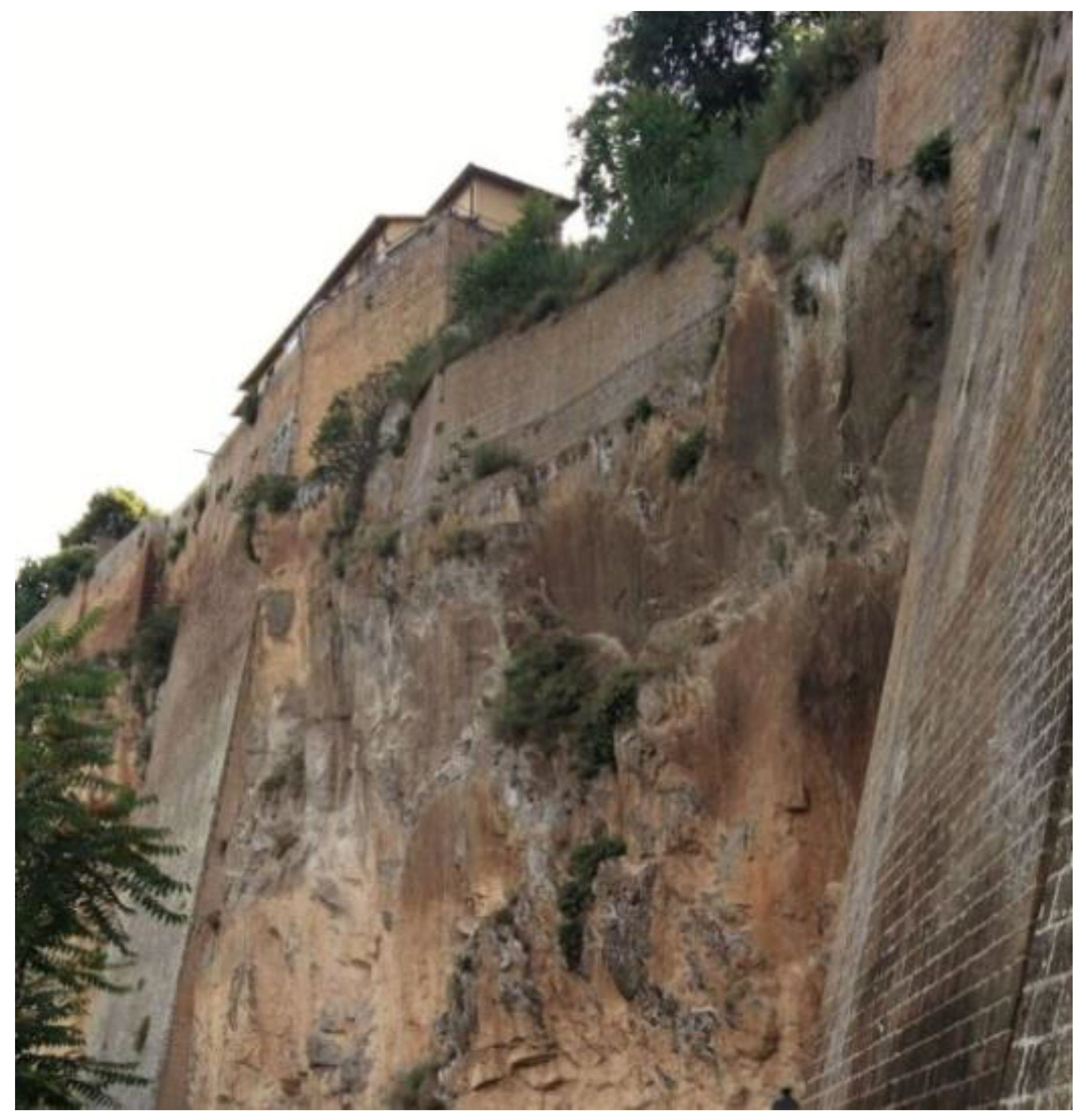
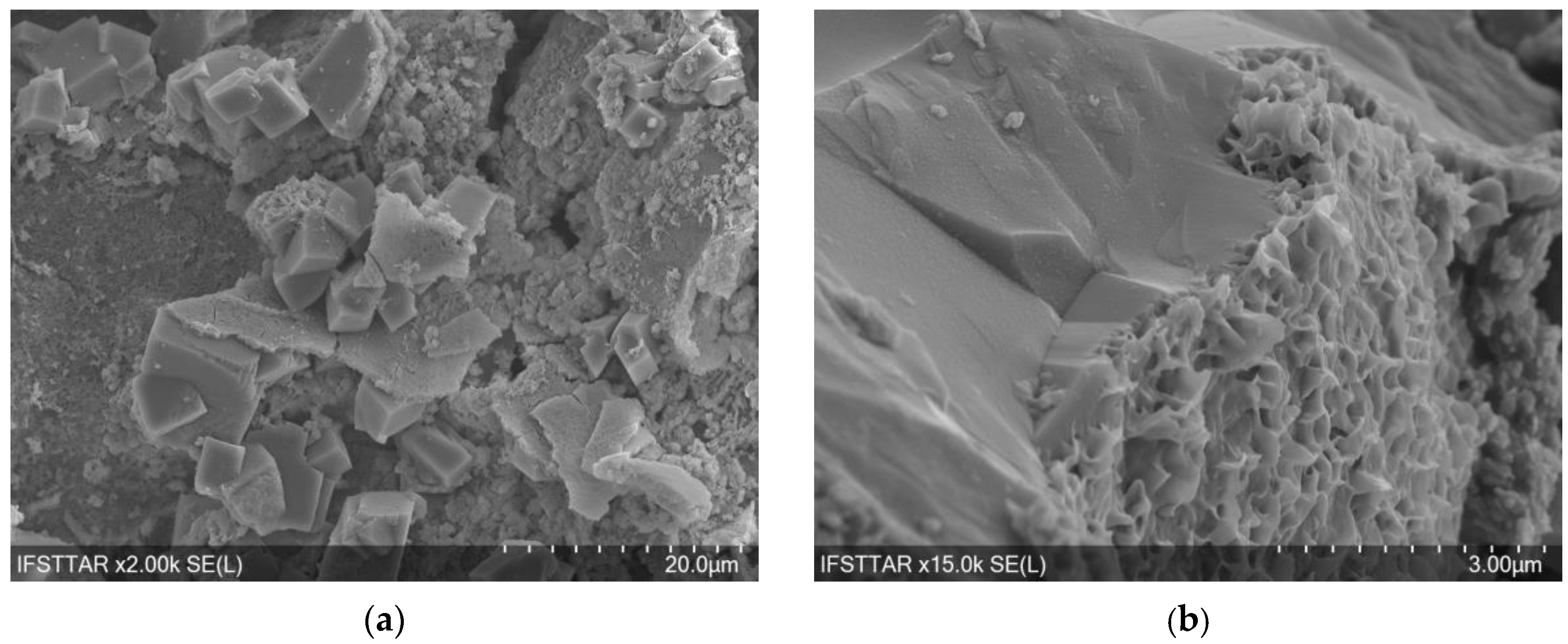
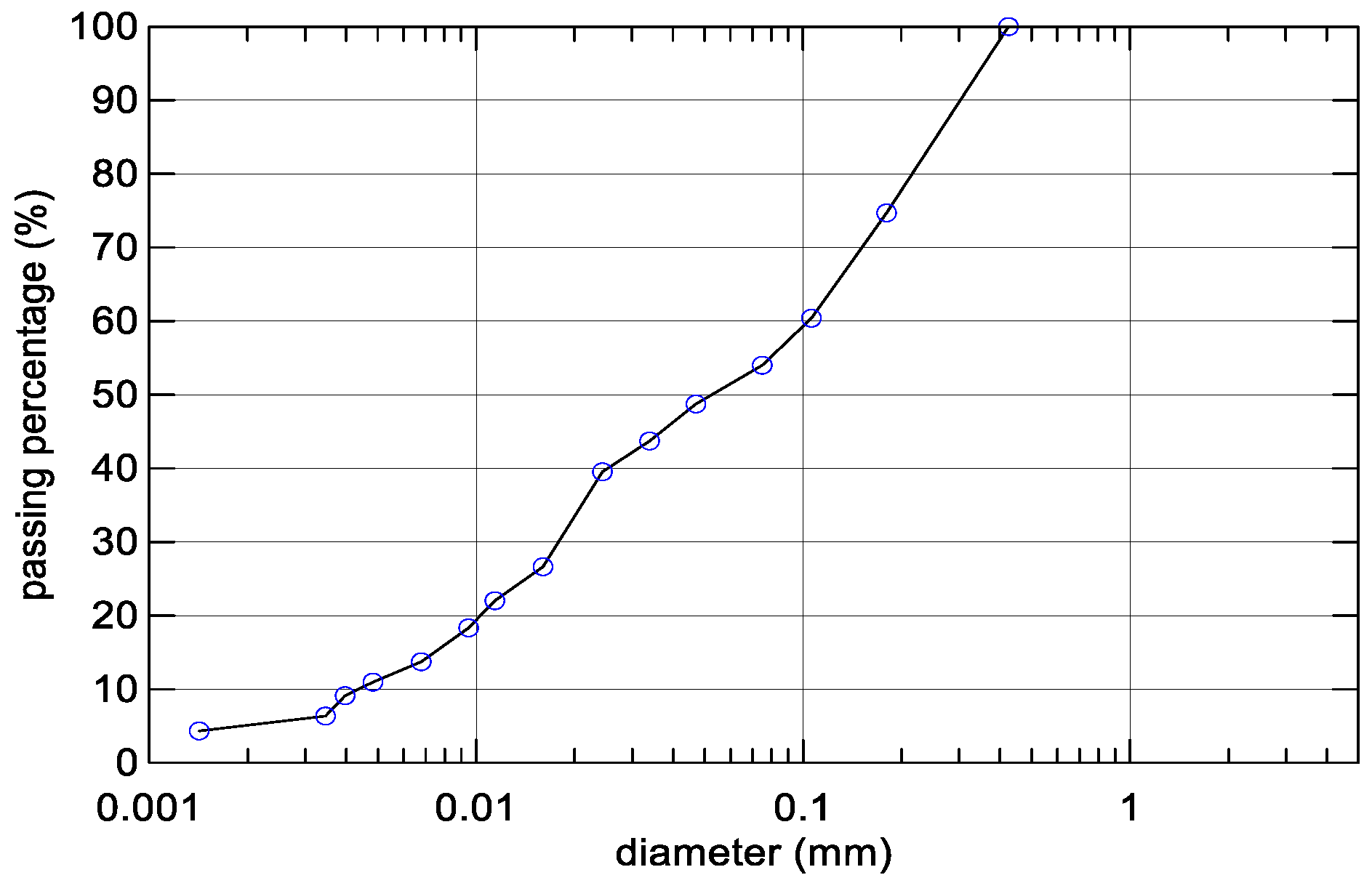
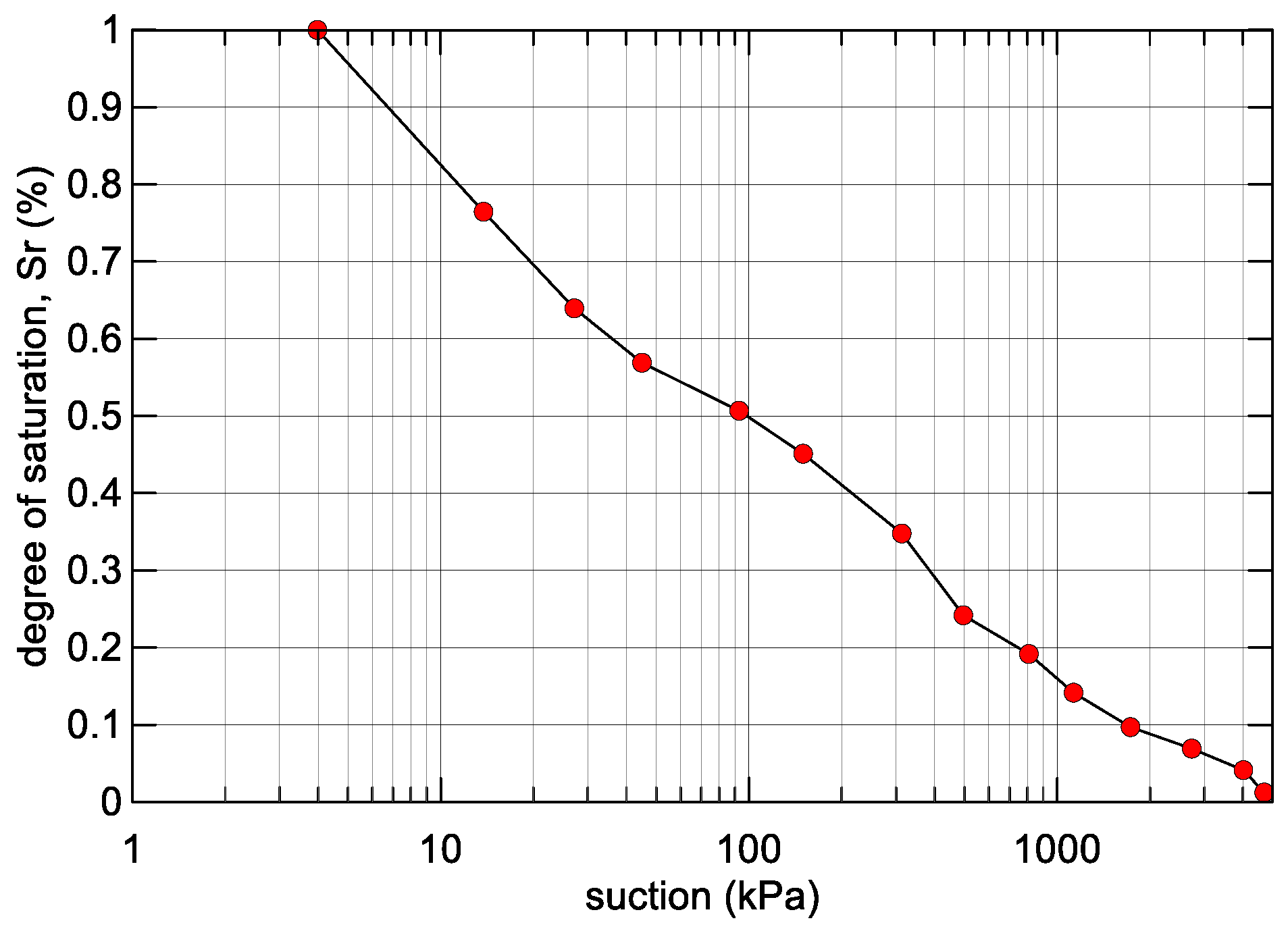
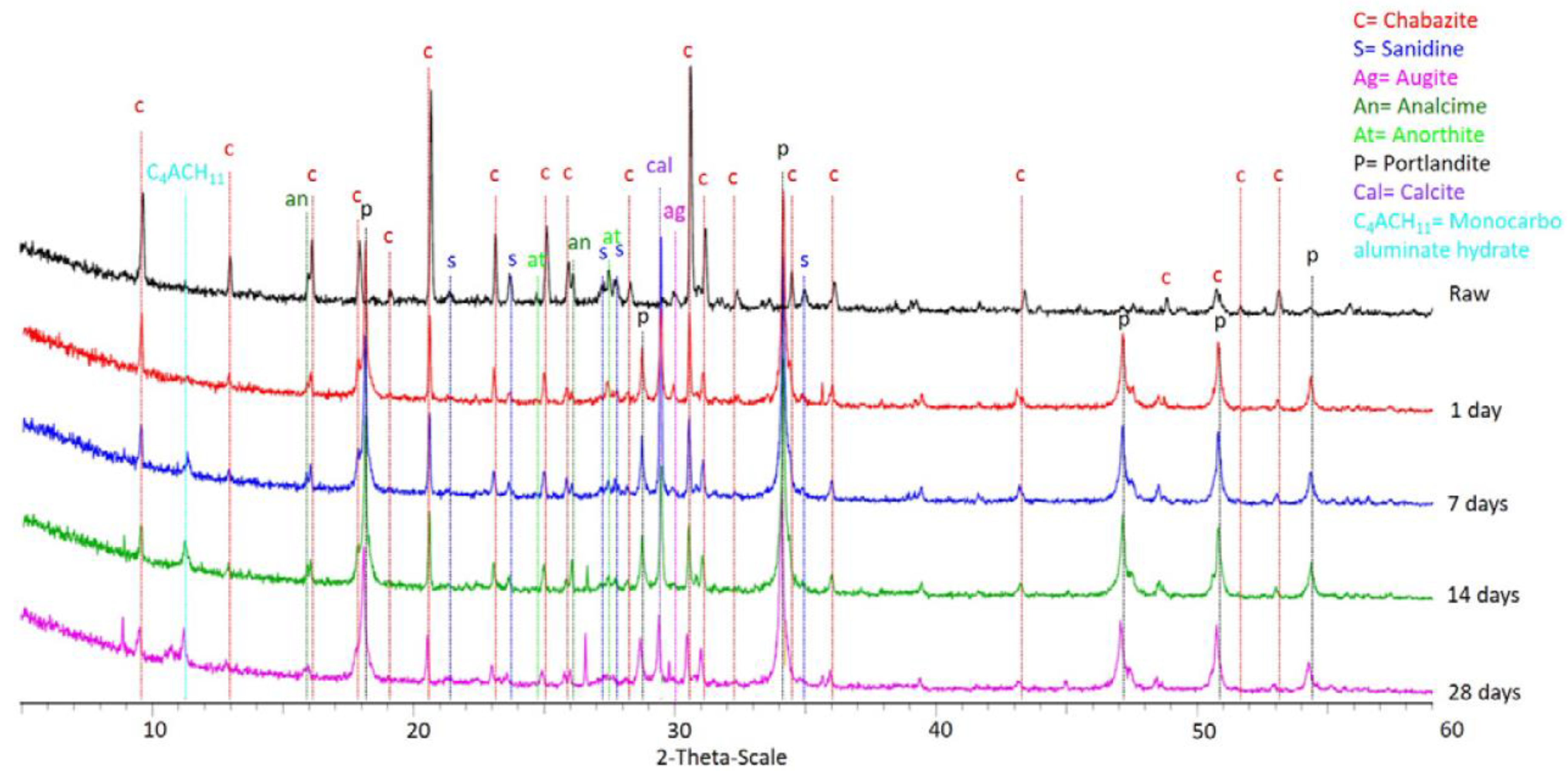
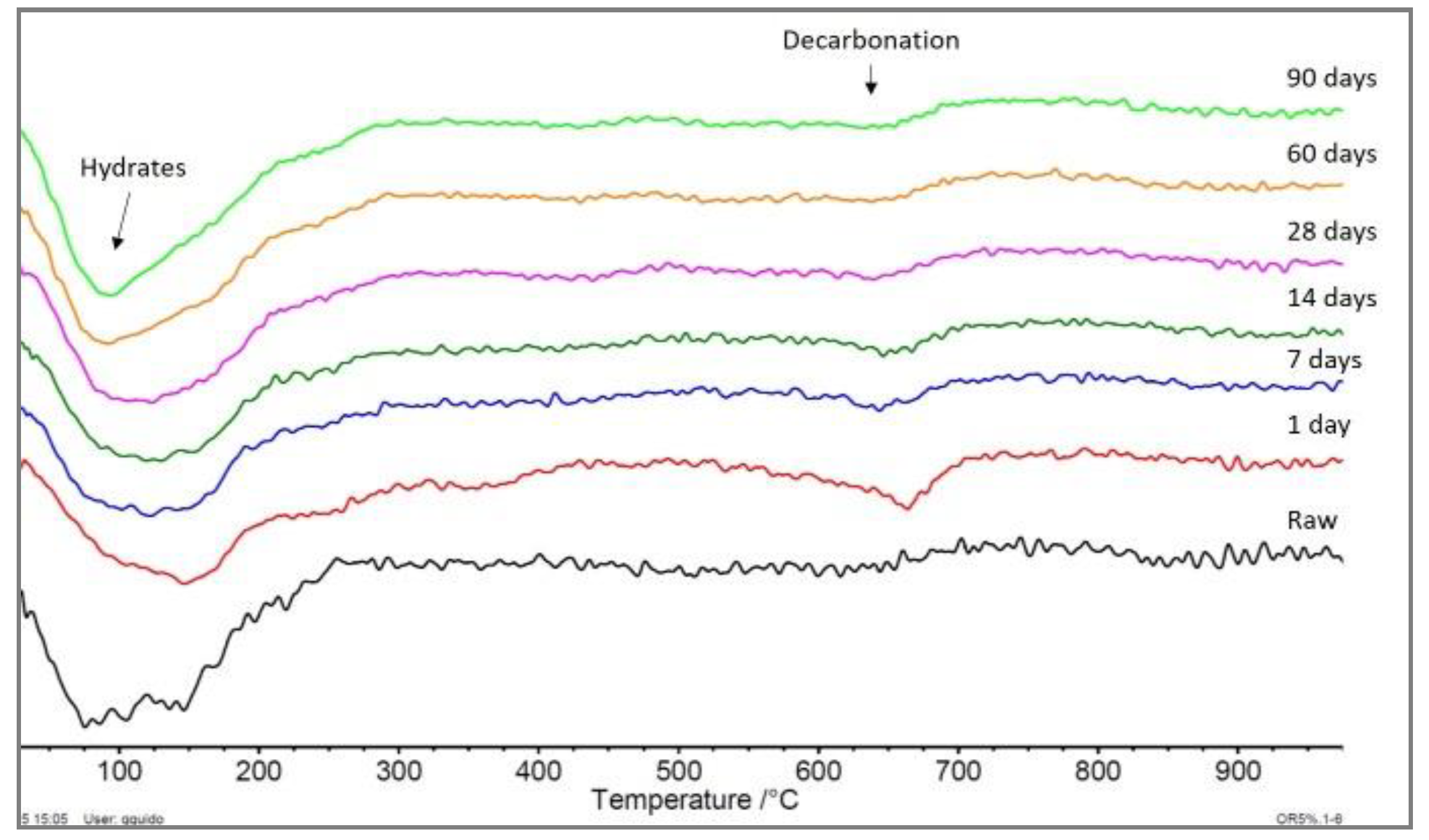
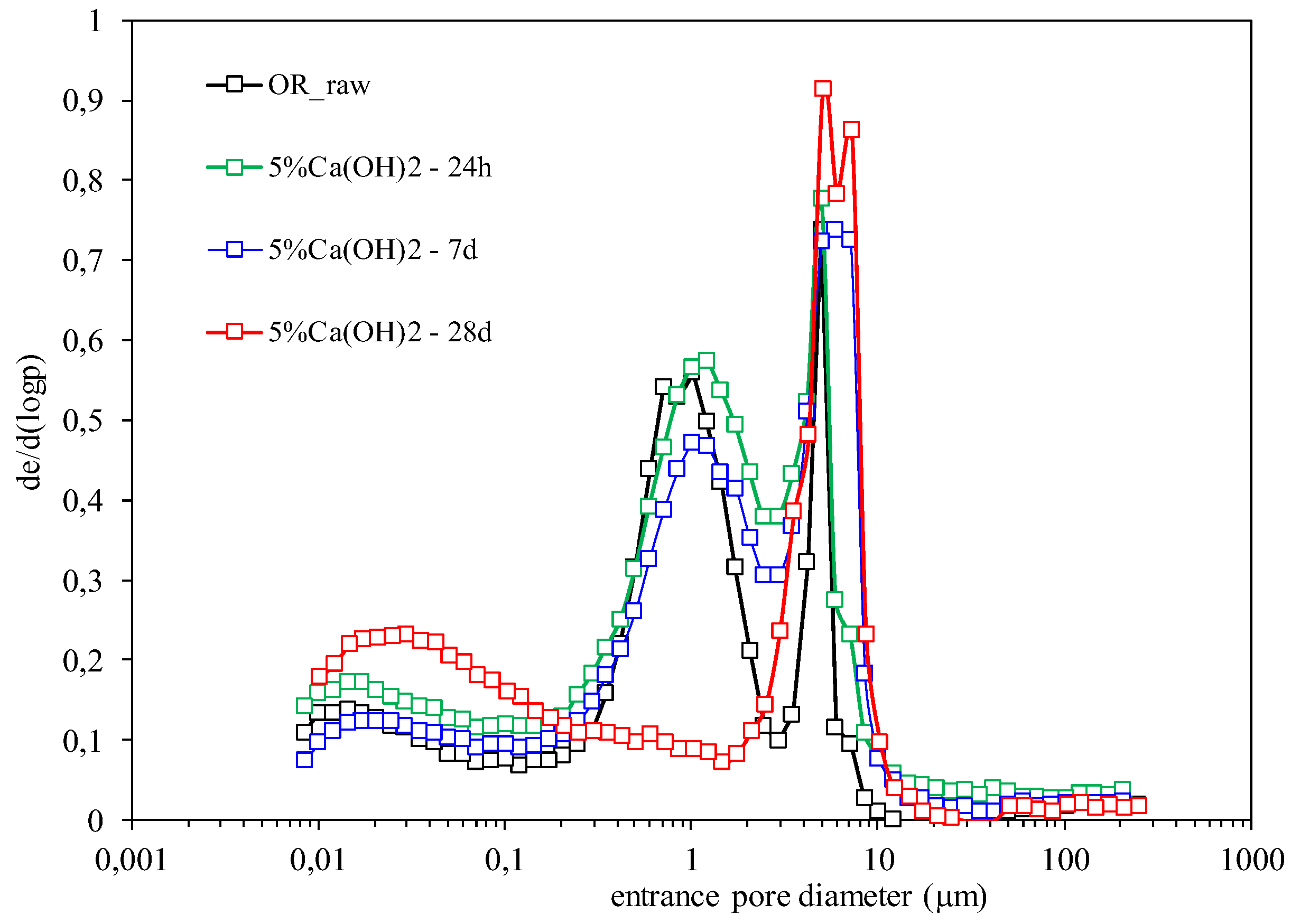
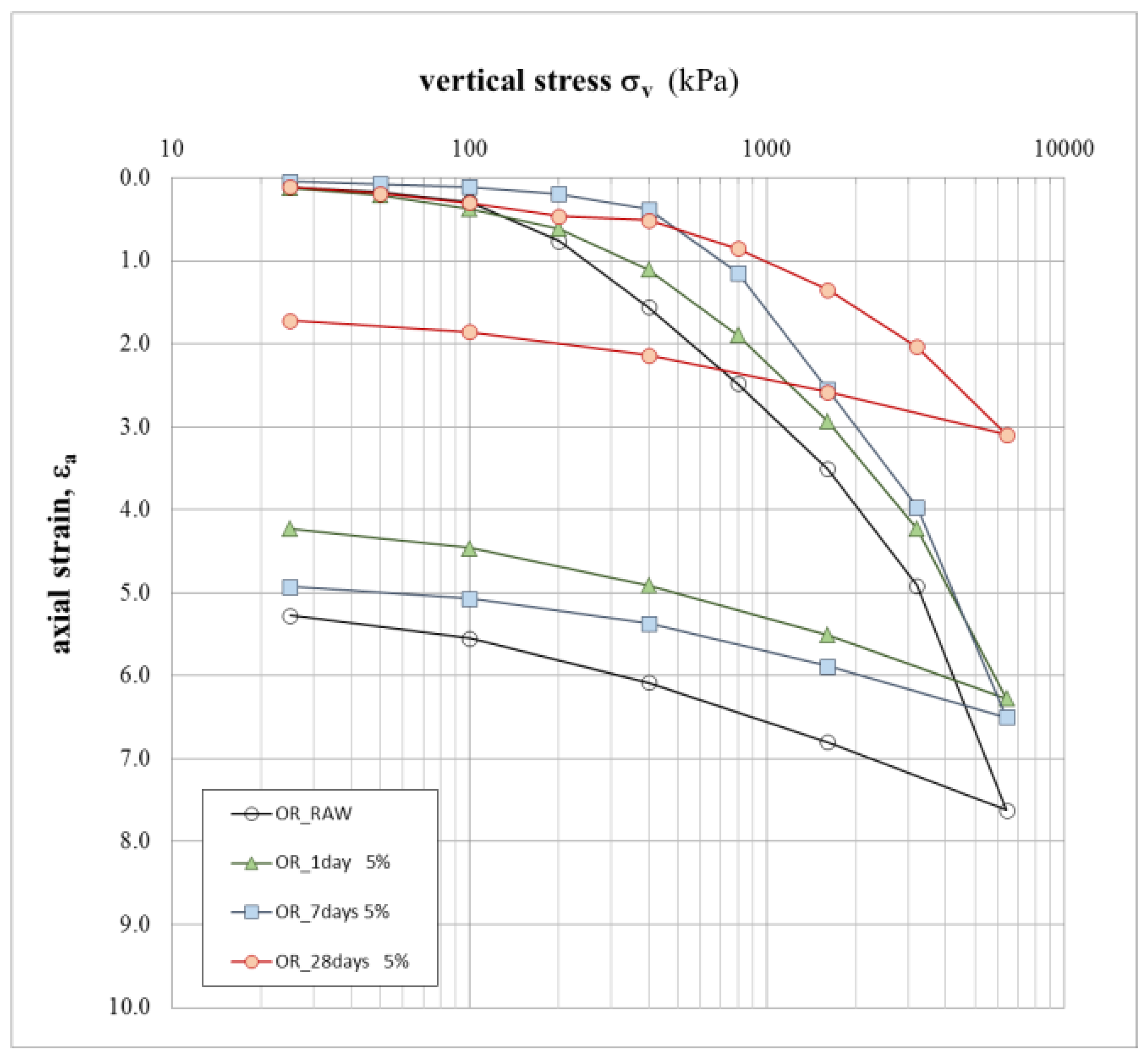
| In Situ | Laboratory | ||||||||
|---|---|---|---|---|---|---|---|---|---|
| w | Gs | Sr | γ | γd | w | Sr | γd | n | e |
| (%) | (-) | (%) | (kN/m3) | (kN/m3) | (%) | (%) | (kN/m3) | ||
| 15 | 2.43 | 47 | 15.8 | 13.7 | 22 | 61.0 | 13.0 | 0.47 | 0.88 |
© 2020 by the authors. Licensee MDPI, Basel, Switzerland. This article is an open access article distributed under the terms and conditions of the Creative Commons Attribution (CC BY) license (http://creativecommons.org/licenses/by/4.0/).
Share and Cite
Cecconi, M.; Cambi, C.; Carrisi, S.; Deneele, D.; Vitale, E.; Russo, G. Sustainable Improvement of Zeolitic Pyroclastic Soils for the Preservation of Historical Sites. Appl. Sci. 2020, 10, 899. https://doi.org/10.3390/app10030899
Cecconi M, Cambi C, Carrisi S, Deneele D, Vitale E, Russo G. Sustainable Improvement of Zeolitic Pyroclastic Soils for the Preservation of Historical Sites. Applied Sciences. 2020; 10(3):899. https://doi.org/10.3390/app10030899
Chicago/Turabian StyleCecconi, Manuela, Costanza Cambi, Stefano Carrisi, Dimitri Deneele, Enza Vitale, and Giacomo Russo. 2020. "Sustainable Improvement of Zeolitic Pyroclastic Soils for the Preservation of Historical Sites" Applied Sciences 10, no. 3: 899. https://doi.org/10.3390/app10030899
APA StyleCecconi, M., Cambi, C., Carrisi, S., Deneele, D., Vitale, E., & Russo, G. (2020). Sustainable Improvement of Zeolitic Pyroclastic Soils for the Preservation of Historical Sites. Applied Sciences, 10(3), 899. https://doi.org/10.3390/app10030899






